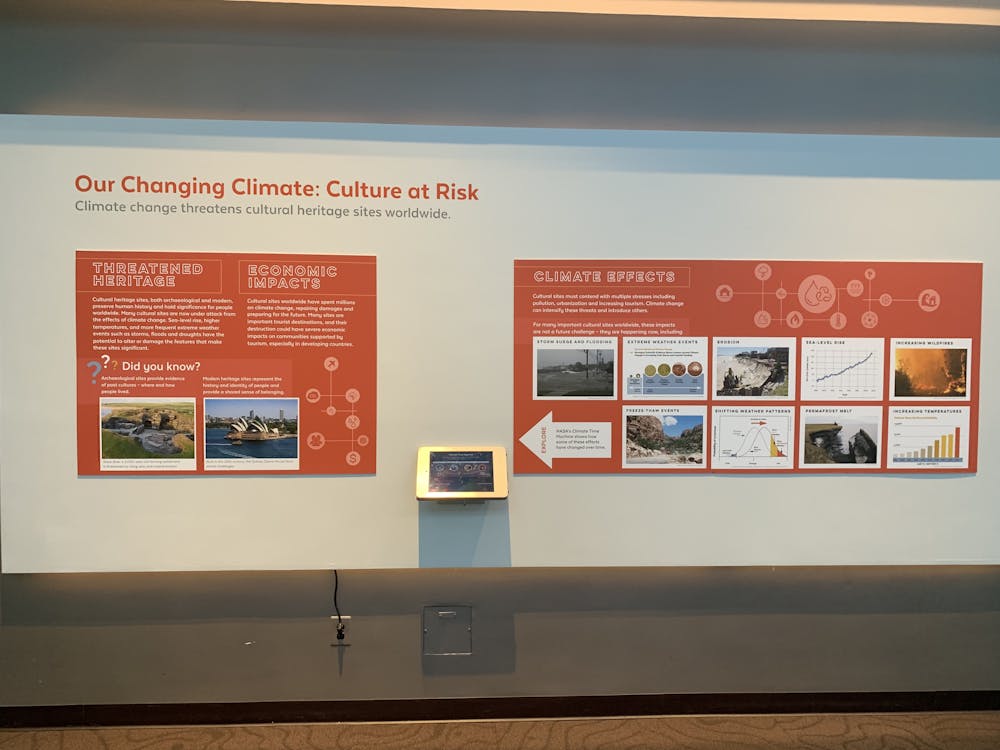Rome is falling.
In the wake of public panic regarding the environment crisis, the Florida Museum of Natural History contributes to the global climate conversation in its temporary exhibit “Our Changing Climate: Culture at Risk.”
Although the weather degradation of the Colosseum was not discussed, the exhibit showcased the profound impacts climate change will have on historic landmarks of equal prestige around the globe.
The first wall of the exhibit gives viewers definitions of the different effects of climate change from storm surges to freeze events. It also highlights the economic impact climate change will have on developing nations.
The exhibit also mentioned how the work of historians will continue to shift. The degradation of cultural heritage sites will change the way we learn about the cultures that built them.
Skara Brae is an ancient farming settlement in Scotland that is currently affected by coastal erosion. The erosion limits the number of cultural artifacts to study which changes the way historians, anthropologists and archaeologists will do their job in the future.
The second wall of the exhibit gives viewers specific examples of cultural heritage sites being affected by extreme weather. One of the cultural sites listed was the Scythian tombs, permanently frozen burial mounds located in Russia that have held the remains of Scythian royalty for over 2,500 years. Rising temperatures threaten to melt the permafrost and leave the burials vulnerable to looting and decay.
An example closer to home is the beach at Kennedy Space Center, which has moved about 200 feet inland due to erosion.
The installment also features an interactive activity using NASA’s Climate Change Time Machine software, which allows viewers to see the effects of these extreme weather events from as early as 1884 to present day on a map. The tablet makes the exhibit engaging for children who can use the visual to understand how the Earth can change over time.
The exhibit reflects the problems we continue to grapple with today as the House of Representatives is currently wrestling with Donald Trump’s administration’s decision to withdraw the U.S. from the Paris Climate Agreement. The United Nations released a bleak report in the fall of 2018 highlighting the breakneck speed at which the environment is being destroyed. The Gainesville City Commission is currently discussing plans to get rid of plastic straws by 2040.
As sea level rises around Florida more every year, it is crucial that we educate ourselves on how climate change will affect us. From fun graphics to high quality photography the Florida Museum successfully provides this information in an interesting and visually appealing way.
The exhibit explores how many cultural sites have spent millions of dollars attempting to repair the damage done by erosion.






